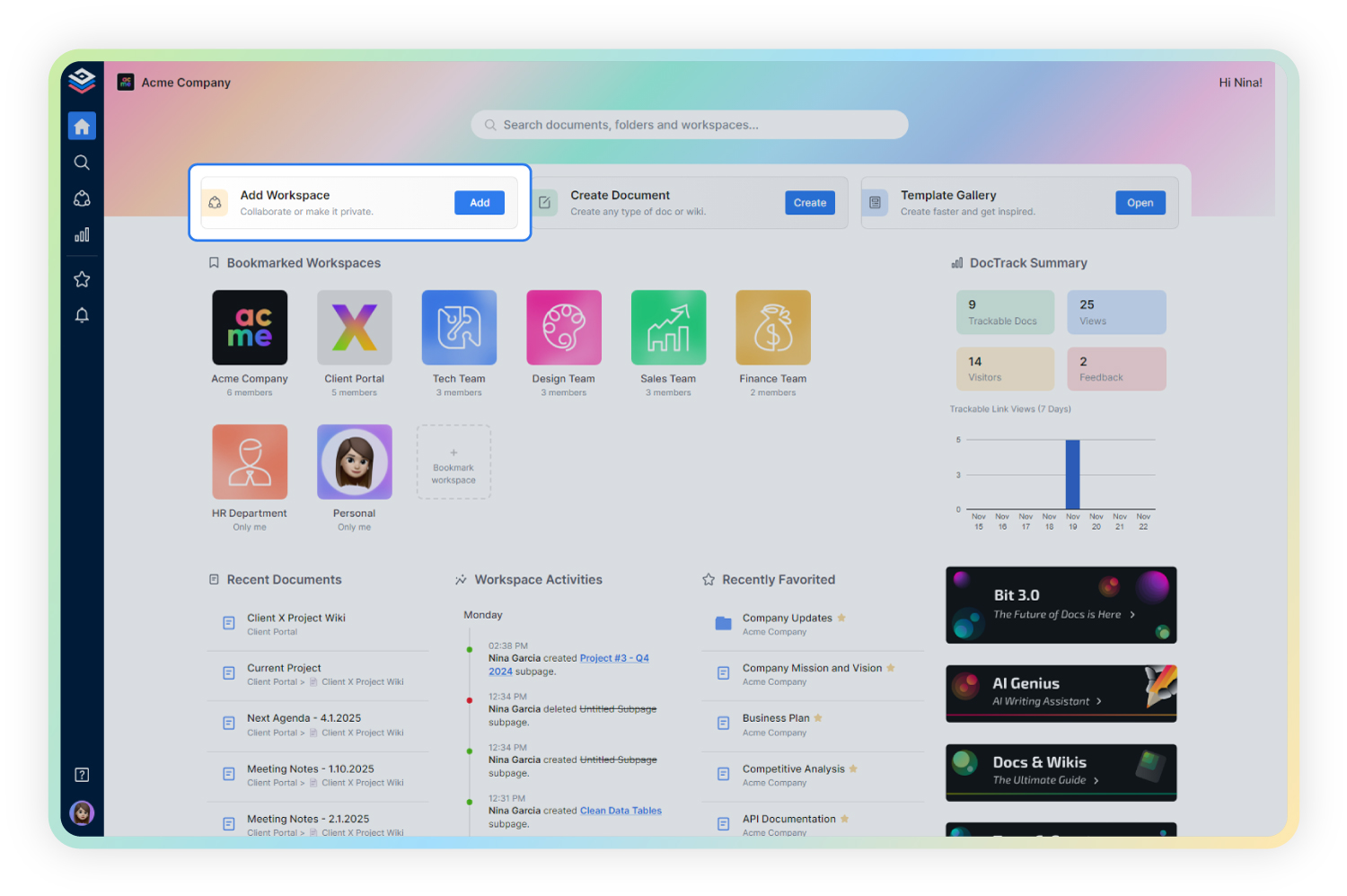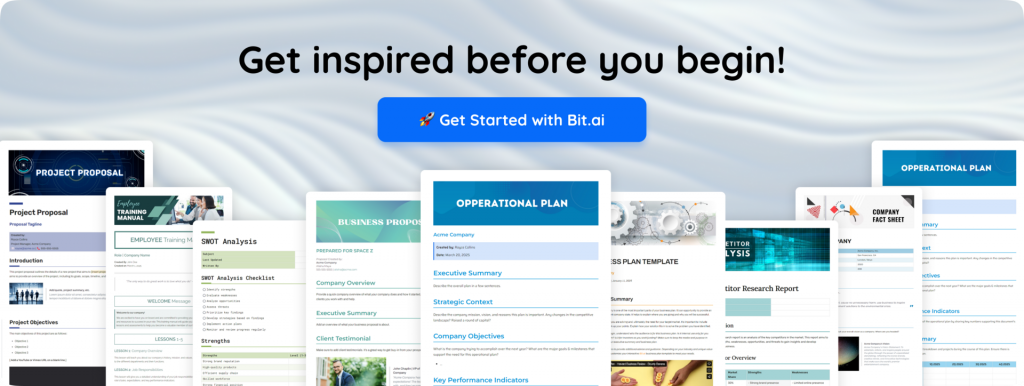To exist is to change, to change is to mature, to mature is to go on creating oneself endlessly. – Henri Bergson
Certain changes in business are based on both- external factors like the emerging competition, varying customer needs, and internal factors like organizational shifts or team operation that can affect the dynamics of a business.
As a result, transitioning in roles, directions, and projects, are common occurrences. Therefore, creating a transition plan during times of change can help you ensure smooth functioning in the organization.
Whether your company is going through a major or a minor transformation, building a transition plan will inform incumbent employees on what they have to do to make sure that the changes take place effectively without hampering the daily output of the business. However, drafting a clean transition plan can be demanding sometimes!
This is why we created a transition plan template (provided at the bottom) for you to make the process easy and smooth. But before we dig into the template, it is important to understand what is a transition plan, why do we need one, and what are the things we need to include in this document.
Let’s begin!
What is a Transition Plan? (Definition)
A transition plan is a document that outlines all the changeover activities and processes that need to follow or implement for a smooth transition depending on the kind of shift being made between the incumbent and the successor.

The transition can be an employee shifting to another position, a project transition, or a business owner changing into a buyer, each transition is equally important across any role and role-based information that passes hands.
Why is the Transition Plan Important?
A business transition plan puts together all the goals, priorities, and strategies in one place for a successful shift. Also, a transition plan helps make sure that all tasks and duties are documented and passed on. Without a well-defined plan, current employees might leave their financial and personal future to chance.
These plans are crucial for any role that is being taken over by another person. It’s a smart way to ensure that nothing slips through the cracks. Having a process in place to hand over the role and responsibilities helps to ensure a smooth transition.
Along with this, the financial security of employees and their families depends on the execution of an effective transition plan.
Read more: Contingency Plan to Tackle Unfavourable Conditions for your Business!
How to Create a Transition Plan? Follow these Steps!
The structure of a typical Transition plan contains the following elements:
Step 1: Add the title of the transition plan
The title of a transition plan describes the purpose and movie of the whole process.
Step 2: Mention transition details
- Incumbent
- Successor
- New Role Start Date
- Supervisor
Step 3: Role accountabilities & expectations for the transition
This represents the roles and responsibilities of the employee for the transition.
Step 4: Incumbent knowledge transfer requirements for plan
This includes the measurable transfer of on-the-job knowledge of both explicit skills as well as implicit or tacit knowledge during the transition.
Step 5: Add role transition checklists
Transition Checklist offers a guideline for key transition activities that must be completed by certain dates to facilitate the transition.
Step 6: Transition plan agreement
- Incumbent Signature
- Successor Signature
- Manager Signature
These components may differ according to the type of transition being made!
Read more: Growth Plan: What is it & How to Create One? (Steps Included)
3 Tips for Creating a Transition Plan
After assessing the above-mentioned components, these 3 steps are set forth below to help you get started on your transition plan.
1. The incumbent should obtain an evaluation of role and responsibilities
Understanding the value of the current role and duties is the very first step in making a transition plan. Hence, it is important to have an understanding if the successor is ready to acquire the responsibilities given the current circumstances.
2. The incumbent should begin making a plan regarding his or her future following the transition
This step is about ensuring that an incumbent is personally ready to exit from any company, project, or responsibility. This makes the transition less painful.
3. Bringing the plan into action with formal groundwork
The final step is to bring the transition plan into action and should be executed with effective communication and formal planning, this will result in an effortless hand-off process.
Create a well-defined Transition plan the Right Way with Bit
All set to create a clear transition plan document to make a dynamic shift in your business? Well, we have got the perfect tool for you!
Bit.ai is a new age online document collaboration tool that helps anyone create awesome transition plan documents, employment contracts, employee handbooks, and other company documents in minutes. Bit is the dream tool for both successors and employees as it helps revolutionize the transition process and makes it more smooth, and interactive.

Bit has an amazing UI that’s easy to understand by a new user, making onboarding easier. The user experience is phenomenal too as everything is easily organized in workspaces, folders, and content libraries.
No matter if you want to create a transition plan or a job description for your business, Bit’s amazing organizational capabilities help arrange your information easily.
Still not sure how Bit can help you create an effective transition plan to help you execute the transitioning process? Let’s see some more of Bit’s awesome capabilities! :
Collaborate in real-time– Multiple people can simultaneously collaborate on a Bit smart document in real-time. Suggest edits, work collectively and ask questions with real-time mentions, and comments.
Minimalistic Editor – Bit’s editor allows you to focus on writing and the work you’re implementing, without any distractions. The platform interface is easy to understand, making it easy for new visitors to get onboard quickly.
Distraction-free and quick documentation- The best part is Bit’s support for Markdown which allows developers to quickly create and format text without any distractions. Once you are done creating your document, you can easily export it as PDFs, Word files, Markdown, and much more. Markdown is supported by GitHub and other software development tools, making it easy to share the work you do inside of Bit with other platforms.
Automated table of contents – Bit also has an automated table of contents based on the headers you add to your document. This makes sure you can scroll to different sections of your document quickly as a successor, employee, and for your HR viewing the final published document!
Multiple ways to share- Bit documents can be shared in a live state meaning that all changes that you make to the document will update in real-time. Moreover, features like document tracking, password protection, file access restrictions, etc. help keep your documents safe.
Here are some of the man benefits of using Bit:
- Smart search, which allows anyone to search and find any files, images, documents, etc. quickly.
- Interlink your transition plan and other documents.
- Create fully responsive documents.
- Create private transition plans only visible to yourself or your team.
- Track engagement on shared transition plans with colleagues, clients, partners, etc.
- 100+ rich media integrations.
Now, that you have learned everything about a transition plan and how to create a document on it, feel free to check out Bit’s amazing transition plan template to make the transitioning process a success!
Read more: Change Management Plan: What is it and How to Create it?
Transition Plan Template by Bit
To make the process of crafting a Transition Plan easier and fun, we have created a ready-made template for you! Check it out below:

How to use a Transition Plan Template with Bit.ai?
The process of creating a transition plan on Bit.ai is insanely easy! Just follow these four simple steps to create a thesis report document quickly:
Step 1: Create a Bit Account
Go the home page of Bit.ai and click on Get Started for Free or Sign Up to get started. Enter your email address to sign up. Once in, you can create your personal profile.

Step 2: Create a Workspace
Workspaces are where the work gets done. Click on the ‘Create Workspace’ button on the right. A popup will show up prompting you to add a name for your new workspace. You can create a workspace around a team, department, large project, client, partner, etc.

Inside each workspace, you can create an unlimited amount of Bit documents and access your content library (storage area for all of your digital assets – web links, files, cloud files, rich embeds, etc.).
Step 3: Add Team Members
Bit allows your team members to collaborate in real-time and get work done. Collaboration starts at the workspace level.

You create private workspaces by default. However, you can invite others to join you inside of a workspace and collaborate together with the knowledge, projects, documents, and content inside of the workspace.
Step 4: Create Your Desired Document
Once you are in the workspace, click on the ‘Create New’ button. Select ‘From Template’ in the dropdown.

A pop-up will display allowing you to select a template from the gallery. In the search box on the top left corner, you can search for a “transition plan template”. Once your desired template pops up, click on it and click on the “Use Template” button on the bottom right corner.
That’s it! Your transition plan document is ready for use!
Few more templates you might be interested in:
- SWOT Analysis Template
- Scope of Work Template
- Business Plan Template
- Status Report Template
- Competitor Research Template
- Training Manual Template
- Project Proposal Template
- Company Fact Sheet
- Operational Plan Template
🎥Watch this video to learn more👇
Conclusion
Finally, keep in mind that, transitioning out of roles or responsibilities is not an isolated event. It is a comprehensive and coordinated process. The business transition plan is not supposed to be filed away and occasionally reviewed.
It is created with the purpose of immediate implementation. If you need any help with our transition plan template or want to know how Bit can help your team, let us know by tweeting us @bit_docs. Cheers!
Further reads:
- Succession Planning: What is it & How to do it?
- Action Plan: What is it & How to Write it? (Steps and Format)
- What is an Implementation Plan & How to Create One?
- How to Create a Strategic Process Improvement Plan?






